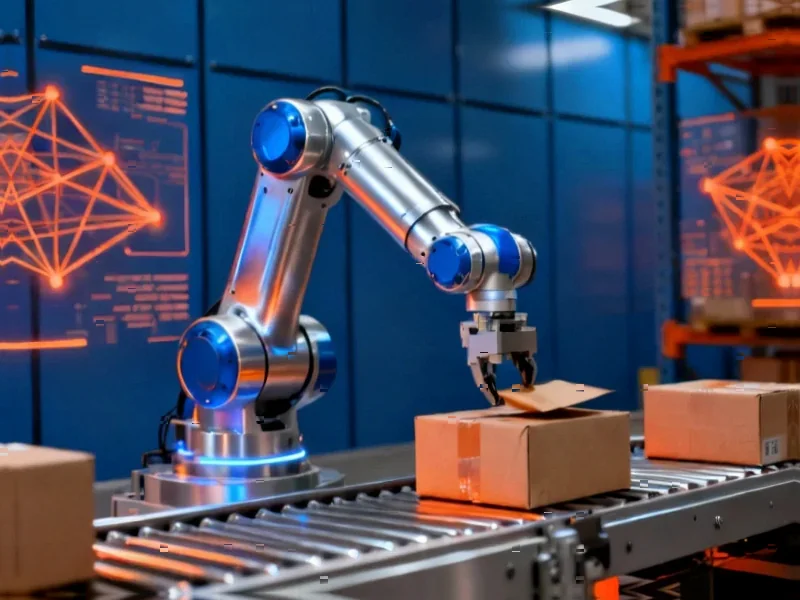According to Manufacturing.net, Amazon engineers and executives aim to automate 75% of company operations, potentially eliminating the need for more than 600,000 new hires by 2033. Internal documents reveal the company expects robotics to “flatten Amazon’s hiring curve” over the next decade, with one Atlanta facility alone potentially reducing staffing by 1,200 workers. This strategic shift represents a fundamental rethinking of how Amazon approaches its massive logistics operations.
Table of Contents
Understanding Amazon’s Robotics Evolution
Amazon’s journey into warehouse automation began in 2012 with its acquisition of Kiva Systems, which provided the foundation for the robotic drive units now common in fulfillment centers. The company has since developed increasingly sophisticated systems including robotic arms for sorting and palletizing, computer vision systems for inventory management, and autonomous mobile robots that navigate facilities alongside human workers. This technological progression reflects Amazon’s broader transformation from an online shopping pioneer to a comprehensive e-commerce and technology platform that increasingly relies on automation to maintain competitive advantage in delivery speed and cost efficiency.
Critical Analysis of Automation Claims
The projected reduction of 600,000 hires raises significant questions about the broader economic impact of such automation. While Amazon emphasizes that automation creates new technical roles, the net effect on employment remains uncertain. The transition from manual warehouse work to technical maintenance and programming positions requires substantial retraining investments that may not materialize at scale. Additionally, the company’s apparent concern about terminology—preferring “advanced technology” over “automation”—suggests awareness of potential public relations challenges. The reality is that many current warehouse workers lack the technical background to transition seamlessly to these new roles, creating potential workforce displacement issues that extend beyond Amazon’s direct employment numbers.
Industry-Wide Logistics Transformation
Amazon’s automation push will likely trigger competitive responses across the logistics sector. Major players including Walmart, Target, and shipping giants like UPS and FedEx will face pressure to accelerate their own automation initiatives to remain cost-competitive. This could create a domino effect where automation becomes table stakes in the industry, potentially accelerating job displacement beyond Amazon’s operations. The timing is particularly significant given ongoing labor shortages and wage pressures in the warehouse sector, which have made automation increasingly attractive from both operational and financial perspectives. As Amazon continues to refine its systems, the company stands to potentially license this technology to other retailers, creating a new revenue stream while further spreading automation across the industry.
Realistic Outlook and Challenges
While the vision of highly automated warehouses is compelling, practical implementation challenges remain substantial. Current robotics technology still struggles with complex manipulation tasks, irregular object handling, and adapting to the unpredictable nature of fulfillment center operations. The transition timeline to 75% automation by 2033 appears ambitious given these technical hurdles. Furthermore, the capital investment required for such widespread automation represents a significant financial commitment even for a company of Amazon’s scale. The company will need to balance automation investments against potential regulatory scrutiny and community relations concerns, particularly in regions where Amazon facilities represent major employment hubs. The ultimate impact may be more gradual than projected, with hybrid human-robot operations persisting longer than current projections suggest.



